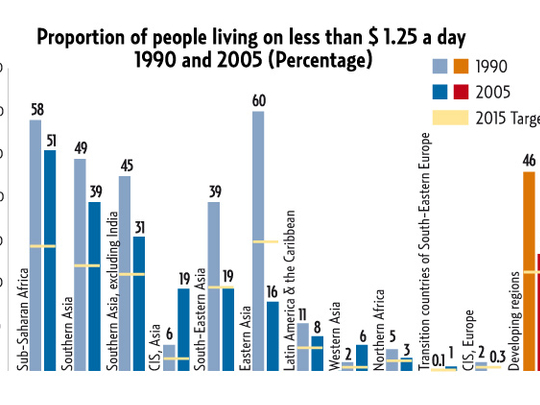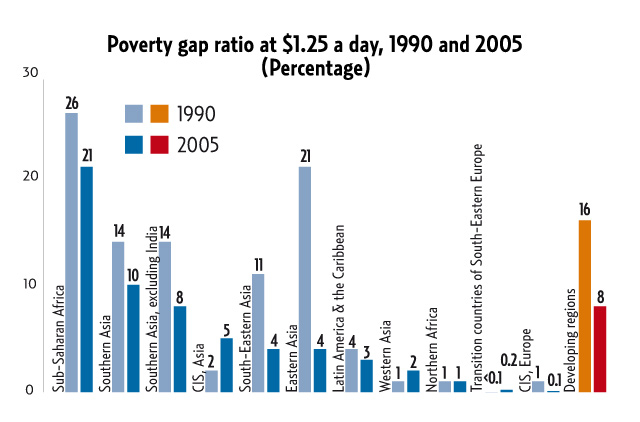
Dubai: Significant parts of the Middle East are experiencing an increase in extreme poverty as the global economic slowdown increased unemployment and hunger spikes in the region, according to the 2010 United Nations Millennium Development Goals (MDG) Report released Wednesday.
About 6 per cent of people in the region lived on less than $1.25 a day in 2005 compared to 2 per cent in 1990.
The global economic and financial crisis, which began in the advanced economies of North America and Europe in 2007, sparked abrupt declines in exports and commodity prices and reduced trade and investment, slowing growth in developing countries, the report said.
The report notes that before the crisis the employment ratio declined from 47 per cent to 44 per cent in the region. As the crisis crippled economies, reduced enterprise capacities and forced millions of people out of work, more people resorted to "vulnerable" employment. This is defined as the sum of own-account workers and contributing family workers who are not typically bound by formal work arrangements and therefore lack employment benefits.
Prevalence of hunger
The number of people in the region living on $1.25 or less a day increased from 8 per cent to 12 per cent between 1998 and 2009, the UN said.
The economic and food crises are also increasing the prevalence of hunger in the region while no progress has been made in reducing the proportion of underweight children. The proportion of undernourished people rose between 1990-92 and 2000-02 (from 5 per cent to 8 per cent) and had only begun to decline slowly in 2005-07 (to 7 per cent), before the food and economic crises probably slowed or reversed progress again, the report said.
The good news is that debt burdens eased for developing countries and remain below historical levels. External debt service payments as a proportion of export revenues fell from 18 per cent to 10 per cent in Western Asia between 2000 and 2008, it said.
The Millennium Goals, which were set in 2000, are being evaluated in a September 2015 UN summit where world leaders will seek agreement on an action agenda to build on successes and close the gaps in achieving all the goals by the target year of 2015. More than 100 heads of state and government are expected to attend, along with leaders from the private sector, foundations and civil society organisations.
The report, an annual assessment of regional progress towards the goals, reflects the most comprehensive, up-to-date data compiled by over 25 UN and international agencies. Produced by the UN Department of Economic and Social Affairs, the report has been designated by the UN General Assembly as an official input to the MDG summit.
The report refers to the West Asia region, which includes the UAE, Bahrain, Cyprus, Iraq, Jordan, Kuwait, Lebanon, Occupied Palestinian Territory, Oman, Qatar, Saudi Arabia, Syria, Turkey and Yemen.
Women get short shrift
Gender equality and empowering women in the workplace continues to be a challenge for the Western Asian region which includes GCC and other Arab countries.
The share of women earning income outside agricultural sector rose slowly to 20 per cent in almost 20 years between 1990 and 2008. It is expected to reach 22 per cent by 2015 well below parity, according to the 2010 United Nations Millennium Development Goals Report. The global share of women in paid employment outside the agricultural sector during the period reached 41 per cent.
And if your boss is a woman then she is one of only 10 per cent of women who hold senior managerial positions the second lowest percentage among all regions surveyed in the report.
For little girls dreaming of school uniforms and new textbooks, poverty is the greatest barrier between girls and their primary education. In secondary education, the gender gap in enrolment is most evident in the three regions where overall enrolment is lowest — sub-Saharan Africa, Western Asia and Southern Asia. In contrast, more girls than boys have signed up for secondary school in Latin America and the Caribbean, Eastern Asia and South-Eastern Asia, the report notes.













